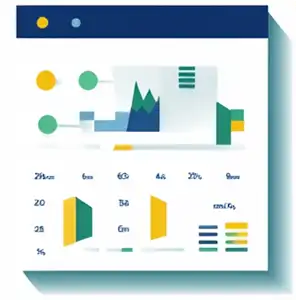For small business owners, staying focused on activities that drive real growth can be tough. That’s where GAME Planning comes in. Let’s break this down into something practical—an action plan that takes you from big-picture strategy to day-to-day tactics that actually move the needle.

Why? Goals give your business direction and focus. Without them, you’re just reacting instead of growing.
Action Steps:
- Identify what specific changes you want to see in customer behavior this year (e.g., increase repeat sales by 20%, grow social media followers by 1,000, or boost monthly revenue by 15%).
- Translate those ambitions into measurable goals with clear timelines.
- Use a simple tool like a spreadsheet or planning software to track these.
Example: Instead of "get more customers," set a goal like "acquire 50 new customers per month through online ads and referrals."

Why? Not all activities create the same impact. The goal is to find the ones that work hardest for your business.
Action Steps:
- Brainstorm all possible activities (ads, promotions, social media, content marketing, partnerships, etc.).
- Use the 80/20 rule: Identify which 20% of activities might drive 80% of your growth.
- Quantify the expected short-term and long-term impacts (even rough estimates help!).
- Prioritise activities based on their expected return on investment (ROI).
Example: If email campaigns generate more repeat sales than social media posts, focus your energy and budget there.

Why? Without measurement, you’re guessing. Knowing what works and why helps you double down on success.
Action Steps:
- Set Key Performance Indicators (KPIs) for each activity (e.g., click-through rates, conversion rates, customer acquisition cost).
- Track both short-term impact (immediate sales/revenue) and long-term impact (customer retention, brand growth).
- Use simple tools like Google Analytics, CRM software, or a marketing dashboard.
- Create a habit of reviewing your numbers monthly to adjust your plans.
Example: If a Facebook ad campaign brings in lots of clicks but few conversions, tweak your offer or targeting—don’t just keep spending.

Why? The marketplace is always changing. Adapting based on real results helps you stay ahead.
Action Steps:
- After each activity, evaluate its effectiveness: Did it meet the goal? What worked, what didn’t?
- Look for trends over time (e.g., which marketing channels consistently outperform others).
- Refocus resources on what’s driving growth and cut back on what’s not.
Example: If a referral program is driving more new business than paid ads, shift more budget and effort there.

Why? GAME Planning isn’t just a one-off exercise—it’s a system that keeps your business growing year after year.
Action Steps:
- Encourage your team to think strategically about their work, not just execute tasks.
- Create a culture where testing and learning from both successes and failures is normal.
- Keep a record of what you learn each quarter, building a playbook for future success.
Example: Make monthly planning meetings non-negotiable, and always ask, "What did we learn this month?"

Why? A clear timeline helps you stay proactive rather than reactive.
Suggested Timeline: This is an example only for you to amend to your needs and fit in with your financial year.
- October - November: Strategic Reflection
- Review annual performance, identify strengths and weaknesses.
- Begin setting broad goals for the next year.
- December: Goal Setting
- Finalise measurable goals and KPIs.
- Create initial drafts of activities to support these goals.
- January: Plan Finalisation
- Prioritise activities based on ROI.
- Create a GAME Plan with timelines and budgets.
- February - March: Implementation Begins
- Launch initial activities.
- Establish measurement tools (Google Analytics, CRM, marketing dashboards).
- Monthly: Review & Refine
- Assess performance against KPIs.
- Adjust activities based on results.
- June - July: Mid-Year Review
- Evaluate long-term impacts.
- Double down on what’s working; cut back on what’s not.
- August - September: Prep for Next Cycle
- Gather insights and performance data.
- Start thinking about the next year’s GAME Plan.

With a solid GAME Plan, small business owners can avoid wasted effort and focus on activities that drive real, sustainable growth. By setting clear goals, choosing the right activities, measuring impact, and learning as you go, you’ll create a business that doesn’t just survive—it thrives.

Author
Marketing Director
My approach to most things is to always look for a solution. Strive to be creative. Love what you do. Have fun along the way.

